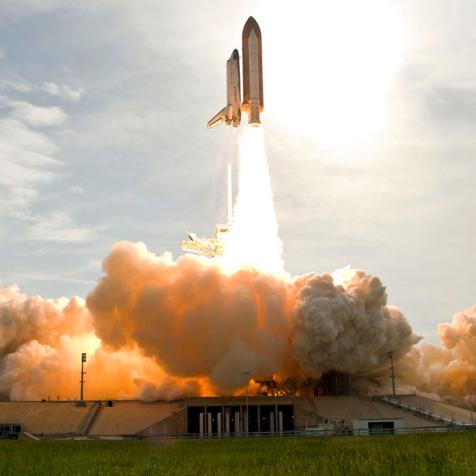
NASA
What to Know About NASA’s Boeing Orbital Flight Test-2
The second uncrewed test flight of Boeing’s CST-100 Starliner has been delayed.
(Updated: August 4, 2021)
The second uncrewed test flight of Boeing’s CST-100 Starliner is no longer scheduled for liftoff to the International Space Station on Tuesday, August 3, 1:20P ET from Space Launch Complex 41 at Cape Canaveral Space Force Station in Florida. The test flight has been delayed due to a valve issue on the Starliner spacecraft.
At a later date, Boeing is going to launch its space capsule via a United Launch Alliance, Atlas V rocket with the goal in mind of increasing the number of human spaceflight launches from American soil. The plan is for Starliner to dock with the International Space Station about 24 hours after launch and return to Earth a few days later with a parachute assisted landing at White Sands Space Harbor in New Mexico. Although there won’t be any passengers on board, the Starliner will be carrying about 400 pounds of NASA cargo and crew supplies for the astronauts of Expedition 65, currently living aboard the orbital outpost.
The mission, OFT-2, will provide data that NASA needs to certify Boeing’s crew transportation system for astronaut travel to and from the International Space Station.
NASA has outlined the below objectives that the OFT-2 must achieve with no errors:

NASA/Bill Ingalls
The Boeing CST-100 Starliner spacecraft is seen after it landed in White Sands, New Mexico, Sunday, Dec. 22, 2019. The landing completes an abbreviated Orbital Flight Test for the company that still meets several mission objectives for NASA’s Commercial Crew program.
- In-orbit operation of the avionics, docking system, communications and telemetry systems, environmental control systems, solar arrays and electrical power systems and propulsion systems;
- Performance of the guidance, navigation & control systems of the Starliner and Atlas V through ascent, on-orbit, and entry;
- Acoustic and vibration levels, and loads across the Starliner exterior and interior
- Launch escape trigger monitoring
- Performance of the Starliner system end-to-end mission operations
Boeing failed the first Starliner flight test, OFT-1, in December of 2019 as the capsule returned to Earth without reaching the International Space Station and OFT-2 has been delayed since last year.
NASA and Boeing look to launch Starliner’s first crewed mission to the International Space Station with NASA astronauts Barry Wilmore, Nicole Mann, and Mike Fincke by the end of this year.
Stay tuned for more updates.





















